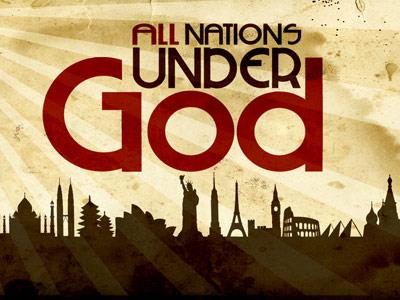-
Hinduism And Christianity Series
Contributed by Jerry Flury on May 28, 2002 (message contributor)
Summary: What believers need to know about the difference of Hinduism and Christianity. Part of a Wednesday evening series on world religions and the Bible.
Hinduism and Christianity
I. What should we know about Hinduism?
A. Hinduism claims 1/6 of the world’s population, with over 750 million followers worldwide. There are approximately 200 Hindu temples or Hindu centers in the U.S.
B. The philosophy of the New Age Movement is directly tied to the philosophy of Hinduism along with scores of modern religious cults and sects, which Hinduism has influenced in varying degrees. Someone has said that Hinduism is the wellspring of a good deal of New Age thinking.
C. Millions of Americans have taken up Hindu practices, such as yoga, meditation, developing altered states of consciousness, asceticism, and seeking "enlightenment."
D. The appeal of Hinduism to modern Western culture is not difficult to comprehend.
1. Hinduism is comfortable with evolutionary thinking. As modern science emphasizes our physical evolution, Hinduism emphasizes our spiritual evolution.
2. Modern psychology and sociology emphasizes the basic goodness and unlimited potential of human nature, Hinduism emphasizes man’s essential divinity.
3. Modern philosophy emphasizes the relativity of all truth claims, Hinduism tolerates many seemingly contradictory religious beliefs.
4. Hinduism emphasizes the primacy of the spiritual over material reality, Hinduism appeals to many that have become disillusioned with strictly material pursuits.
II. The Origin of Hinduism
A. Hinduism has its roots in the interrelationship of two basic religious systems: that of the ancient civilization residing in the Indus River Valley from the third millennium B.C., and the religious beliefs brought to India by the Aryan people (possibly from the Baltic region) who began infiltrating the Indus Valley sometime after 2000 B.C.
B. Hinduism originated from a body of conflicting and contradictory literature called the Vedas (ca. 1500-1200 B.C.). Hindus claim that this body of literature was supernaturally revealed by the Hindu gods. Thus, these basic religious texts "make a special claim to be divine in their origin"
C. The name was not given until the 13th century and only then, by the invading Muslims who wanted to distinguish between their faith and that of India.
III. Hindu Beliefs about God.
A. An understanding of the Hindu beliefs about God is important even if we don’t know any Hindus or people from India because we are all in contact with the New Age movement, and it draws its ideas about God from Hinduism.
B. Hinduism embraces both pantheism (the belief that all is God, God is all) and polytheism (a belief in many lesser gods).
C. The vast majority of Hindus believe in God in some way or other, but there are some that do not. Some Hindus worship Shiva; others Vishnu or his incarnations (avatars), most notably Krishna or Rama. Others again are worshippers of the goddesses. The individual Hindu may reverence one god, a few, or many or none at all! He may also believe in one god and in several gods as manifestations of him. He may express the ultimate in personal or impersonal. - Eerdmans’ Handbook to The World’s Religions, p.172.
D. All in all, it is often stated that Hinduism claims 330 million gods and goddesses!
E. Although there are exceptions, their gods are not seen in human terms but rather in terms of nature or cosmic. All can be understood as expressions of Braham (Braham - The ultimate source of all being - it is origin, cause and basis. The absolute which almost defies a definition.)
F. In the Vedic period the three main gods were:
1. Agn - the life-force, god of fire.
2. Indra - the shy god and god of war.
3. Varuna - the upholder of the cosmic order.
The three gods that came later all had a consort or wife.
4. Brahma - the creator and Sarasvati, his consort, the goddess of Knowledge.
5. Shiva - the destroyer and Kali, his consort, the great mother and symbol of judgement.
6. Vishnu - the preserver and Lakshmi, his wife, the goddess of fortune and beauty. Vishnu is believed to draw near to man in ten avatars:
a. Matasya . . . . . . . . . . The fish.
b. Kurma . . . . . . . . . . . .The tortoise.
c. Varaha . . . . . . . . . . . The boar.
d. Nara-Simha . . . . . . . . The man-lion.
e. Vamana . . . . . . . . . . The dwarf.
f. Parusha-Rama . . . . . . Rama with an axe.
g. Rama-Chandra . . . . . .Noble hero of Ramayana.
h. Krishna . . . . . . . . . . .Who was also a god in his own right.
i. Buddha . . . . . . . . . . The enlightened one and founder of Buddhism.
j. Kalhi . . . . . . . . . . . . The tenth avatar yet to come.

 Sermon Central
Sermon Central


